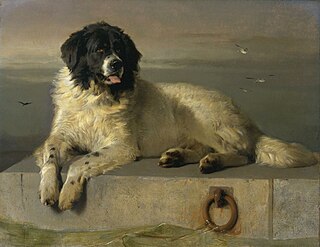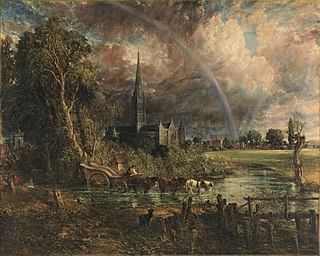 W
WThe Battle of Nancy is an 1831 painting by Eugène Delacroix, showing the 1477 Battle of Nancy and the death of Charles the Bold.. It is now in the Musée des Beaux-Arts de Nancy. Nancy's 'société royale des sciences, lettres et arts' suggested three possible subjects - the battle itself, Lorraine's victory over the Burgundians or the discovery of Charles the Bold's body - Delacroix chose the first of these, but did not go to Nancy in person, instead basing the work on several preparatory sketches of medieval weapons and costumes, of scenes from literature such as Walter Scott's Anne of Geierstein and of topographical maps provided by baron Schwitter
 W
WCromwell with the Coffin of Charles I is a partially-varnished c.1831 watercolour by Eugène Delacroix, now in the Département des Arts graphiques of the Louvre in Paris.
 W
WA Distinguished Member of the Humane Society is an 1831 oil on canvas work by English painter Sir Edwin Henry Landseer depicting a Newfoundland dog. The original was damaged in a flood whilst on loan to the Tate Gallery in 1928, and was returned to public view for the first time in 50 years after it was restored in 2009.
 W
WFrom Darkness, the Light or Allegory of the Hungarian Academy of Sciences is a monumental painting by Johann Ender in the Art Collection of the Hungarian Academy of Sciences in Budapest. It is also the official symbol of the institution, the main motif constituting its logo.
 W
WThe Great Enclosure or The Ostra Enclosure (Ostra-Gehege) is an 1831 oil on canvas painting by Caspar David Friedrich, now in the Galerie Neue Meister in Dresden, though it hangs in the Albertinum. It is known as the "crowning achievement of Friedrich's late work".
 W
WItalian Brigands Surprised by Papal Troops is an 1831 painting produced in Rome by Horace Vernet. It was recorded in the "John T. Johnston Collection", which was sold by its owner to William T Walters of Baltimore on 20 December 1876 for $10,110, the most expensive work in Johnston's collection. In 1894 it passed to Henry Walters and in 1931 one of his heirs left it to its current owner, the Walters Art Museum, Baltimore.
 W
WParochialstrasse in Berlin is the title of a series of similar paintings by German artist Eduard Gaertner. Done in oil on canvas, the compositions depict the rapidly-industrializing urban landscape of 1830s Berlin, then the capital of the Kingdom of Prussia. The work shows people going about their day, street dogs, and the central street culminates in the Nikolaikirche, Berlin's oldest church. Three compositions were produced; one is in the collection of the Metropolitan Museum of Art, one was destroyed in World War II, and one is in the collection of the Nationalgalerie in Berlin.
 W
WSalisbury Cathedral from the Meadows was painted by John Constable in 1831, one year after the death of his wife, Maria. It is currently on display in London, at Tate Britain, in the Clore gallery. He later added nine lines from The Seasons by the eighteenth-century poet James Thomson that reveal the painting's meaning: That the rainbow is a symbol of hope after a storm that follows on the death of the young Amelia in the arms of her lover Celadon. Constable exhibited this painting at the Royal Academy in 1831, but continued working on it during 1833 and 1834.
 W
WThe Spanish Girl in Reverie is a 19th century oil painting by Washington Allston. Done in oil on canvas, the painting depicts a young Spanish girl waiting the return of her lover from war. The painting is currently in the collection of the Metropolitan Museum of Art.
 W
WThe Refugees of Parga is an 1831 oil on canvas painting by Francesco Hayez, now in the Pinacoteca Tosio Martinengo in Brescia. It shows Greek refugees fleeing Parga after the British sold it to the Ottoman Empire in 1819.
 W
WA Young Tiger Playing with its Mother is a painting of 1830–31 by French artist Eugène Delacroix depicting two enormous tigers "playing" with each other. Painted early in his career, it shows how the artist was attracted to animal subjects in this period. The painting was exhibited at the Salon of 1831, and archives of Delacroix's will executor, Achille Piron, revealed that the painter had paid 1,200 francs to insure it. It belonged to M. Maurice Cottier and now is on display at Room 77 of Louvre in Paris.